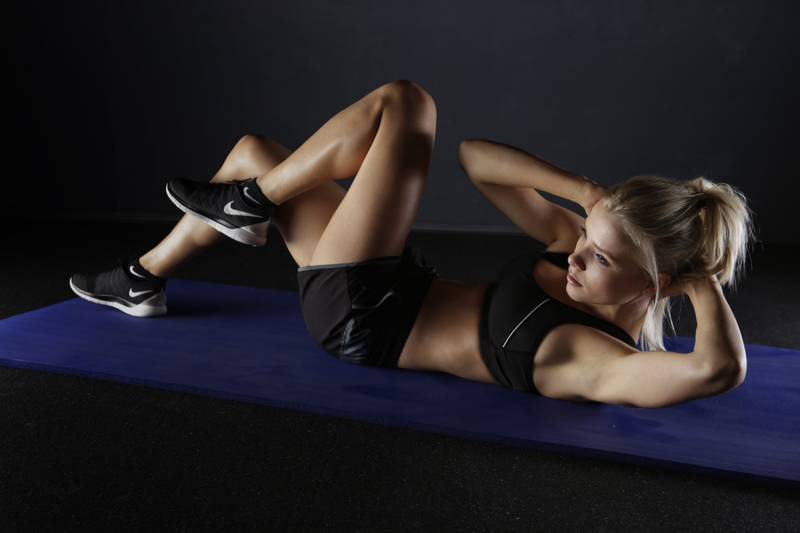How to Create a Balanced Fitness Routine: Cardio, Strength, and Flexibility
October 21, 2024

Achieving overall fitness requires more than just sticking to one type of exercise. A balanced fitness routine that incorporates cardio, strength training, and flexibility ensures that you build endurance, increase muscle strength, and improve your range of motion. Whether you’re a beginner or looking to enhance your current workout routine, balancing these three key components can help you stay fit, prevent injury, and improve your overall health.
In this guide, we’ll walk you through how to create a well-rounded fitness routine that combines cardio, strength training, and flexibility exercises, giving you the tools to achieve your fitness goals.
1. Understanding the Components of a Balanced Fitness Routine
A balanced fitness routine focuses on three main components:
- Cardio: Exercises that raise your heart rate and improve cardiovascular endurance. Examples include running, cycling, and swimming.
- Strength Training: Exercises that build and maintain muscle mass, increase bone density, and boost metabolism. Examples include weightlifting, resistance band exercises, and bodyweight exercises.
- Flexibility: Exercises that improve your range of motion, enhance mobility, and prevent injury. Examples include yoga, stretching, and Pilates.
Including all three types of exercise in your weekly routine ensures that you address multiple aspects of fitness, helping you stay active, strong, and injury-free.
2. How Much of Each Type of Exercise Should You Include?
Creating a balanced fitness routine involves allocating time to each type of exercise. Here’s a guideline for how to structure your workouts throughout the week:
- Cardio: Aim for at least 150 minutes of moderate-intensity cardio (like brisk walking or cycling) or 75 minutes of high-intensity cardio (like running or HIIT) per week. This can be broken down into 30-minute sessions, 5 days a week, or shorter sessions if you prefer.
- Strength Training: Include strength training exercises at least 2-3 times a week, targeting all major muscle groups. Allow at least 48 hours of rest between working the same muscle group to promote recovery.
- Flexibility: Incorporate flexibility exercises 2-3 times a week. Stretching for 10-15 minutes after a workout or dedicating an entire session to yoga or Pilates can improve your flexibility and help with recovery.
Now, let’s dive into each component in more detail.
3. Cardio: Boost Endurance and Heart Health
Cardio exercises are essential for improving your cardiovascular health, burning calories, and boosting your endurance. By raising your heart rate and keeping it elevated for an extended period, cardio helps improve your heart, lung, and overall circulatory function.
Types of Cardio Exercises:
- Running or Jogging: Great for increasing stamina and burning calories. If you’re a beginner, start with jogging or brisk walking, and gradually increase the intensity.
- Cycling: Whether outdoors or on a stationary bike, cycling provides a low-impact cardio workout that’s easy on the joints.
- Swimming: A full-body workout that improves endurance and is gentle on the joints, making it perfect for all fitness levels.
- High-Intensity Interval Training (HIIT): Alternating between short bursts of intense activity and rest periods, HIIT is a time-efficient way to burn calories and improve endurance.
How to Incorporate Cardio:
- Beginners: Start with 20-30 minutes of moderate cardio, like brisk walking or cycling, 3-4 times a week.
- Intermediate to Advanced: Try 30-45 minutes of running, swimming, or HIIT workouts 4-5 times a week for higher intensity.
4. Strength Training: Build Muscle and Boost Metabolism
Strength training is key to building lean muscle mass, increasing metabolism, and improving overall strength. By working your muscles through resistance exercises, you’ll improve your body composition, strengthen bones, and enhance your ability to perform everyday activities.
Types of Strength Training Exercises:
- Weightlifting: Lifting free weights or using weight machines to target specific muscle groups. Compound exercises like squats, deadlifts, and bench presses are particularly effective for building strength.
- Bodyweight Exercises: Exercises like push-ups, squats, lunges, and planks use your own body weight for resistance, making them great for at-home workouts.
- Resistance Band Exercises: Resistance bands are portable and versatile, allowing you to add resistance to a wide range of movements, like bicep curls or leg lifts.
How to Incorporate Strength Training:
- Beginners: Start with full-body strength workouts 2-3 times a week. Focus on compound exercises that target multiple muscle groups, such as squats, push-ups, and rows.
- Intermediate to Advanced: Increase to 3-4 strength training sessions per week, splitting workouts into specific muscle groups (e.g., upper body one day, lower body the next).
Don’t Forget to Rest: Rest days are crucial for muscle recovery. Make sure to leave 48 hours between working the same muscle group to allow time for repair and growth.
5. Flexibility: Improve Mobility and Prevent Injury
Flexibility exercises often take a back seat in fitness routines, but they are vital for maintaining mobility, reducing muscle tension, and preventing injuries. By stretching and lengthening your muscles, you’ll improve your range of motion, which enhances performance in other types of exercises.
Types of Flexibility Exercises:
- Static Stretching: Holding stretches for 15-30 seconds at a time to lengthen muscles. This type of stretching is ideal for cooling down after a workout.
- Dynamic Stretching: Involves moving through a range of motion to warm up muscles before exercising. Examples include arm circles and leg swings.
- Yoga: A mind-body practice that combines flexibility, strength, and relaxation. Yoga poses like downward dog, warrior pose, and pigeon pose improve flexibility and core stability.
- Pilates: Pilates focuses on controlled movements and core strength, making it a great way to improve flexibility while also enhancing posture and balance.
How to Incorporate Flexibility Exercises:
- Stretch After Workouts: Spend 10-15 minutes stretching the muscles you worked after each cardio or strength session.
- Dedicate Time to Yoga or Pilates: Consider adding a yoga or Pilates session to your weekly routine for an all-in-one workout that builds strength, improves flexibility, and enhances relaxation.
6. Sample Weekly Workout Plan
Here’s a sample workout plan that incorporates cardio, strength training, and flexibility exercises to help you get started with a balanced fitness routine:
- Monday:
- 30 minutes of cardio (running, cycling, or swimming)
- 15 minutes of stretching (focus on legs and hips)
- Tuesday:
- Strength training (upper body): push-ups, dumbbell rows, bicep curls, shoulder presses
- 10 minutes of core work (planks, Russian twists, leg raises)
- Wednesday:
- 30 minutes of cardio (HIIT workout or brisk walking)
- 15 minutes of stretching or yoga (focus on flexibility and balance)
- Thursday:
- Strength training (lower body): squats, lunges, deadlifts, calf raises
- 10 minutes of core work (mountain climbers, bicycle crunches, planks)
- Friday:
- 40 minutes of moderate-intensity cardio (swimming, jogging, or cycling)
- Full-body stretch for 10-15 minutes
- Saturday:
- Yoga or Pilates class (focus on flexibility, core, and relaxation)
- Sunday:
- Rest day or gentle stretching to aid in recovery
This schedule allows you to balance cardio for heart health and endurance, strength training for muscle building, and flexibility exercises for improved mobility and injury prevention.
7. Listen to Your Body and Adjust Accordingly
Every individual’s fitness needs and goals are different, so it’s important to listen to your body and adjust your routine based on how you feel. If you’re just starting out, ease into your new routine gradually to avoid overtraining or injury. As you progress, increase the intensity and duration of your workouts to continue challenging your body.
Conclusion
Creating a balanced fitness routine that includes cardio, strength training, and flexibility exercises is essential for overall health and fitness. By incorporating these three components into your weekly workouts, you’ll improve endurance, build strength, and increase flexibility, all while reducing the risk of injury and enhancing your well-being.
Whether you’re a beginner or an experienced fitness enthusiast, the key to long-term success is consistency and variety. Mix up your workouts, listen to your body, and enjoy the benefits of a well-rounded fitness routine that keeps you healthy, strong, and active.
Start building your balanced fitness routine today, and experience the benefits of a well-rounded approach to health and wellness!






